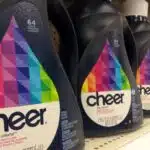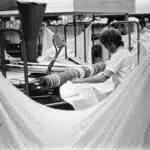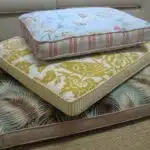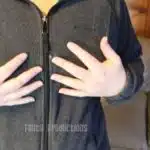As a textile care specialist, the proper washing of down coats, comforters, and sleeping bags is a crucial responsibility. These items are not only expensive but also require delicate handling due to their unique composition. The maintenance of these products ensures their longevity and cleanliness, ultimately affecting the quality of sleep and overall comfort of the user.
Down products consist of feathers from geese or ducks that have been treated for insulation purposes. The feathers are then woven into a fabric shell to create warmth and comfort for the user. Down products are commonly used in outdoor activities such as camping, hiking, and mountaineering due to their ability to retain heat in cold environments. However, improper washing techniques can cause damage to the feathers resulting in poor insulation and decreased durability. In this article, we will discuss how to properly wash down coats, comforters, and sleeping bags while maintaining their quality and extending their lifespan.
Understanding Down Products
Down insulation is a popular choice for warmth in products such as coats, comforters, and sleeping bags. However, understanding the properties of down is important for proper care. Down is made up of clusters of soft fibers that trap air and provide insulation. It is lighter and more compressible than synthetic materials, making it a preferred option for outdoor enthusiasts.
One potential concern with down products is feather allergies. While rare, some individuals may experience an allergic reaction to feathers or the dust mites that can accumulate in down. For these individuals, synthetic alternatives may be a better option. However, with proper cleaning and maintenance, down products can be enjoyed by most individuals without issue.
Proper washing techniques are essential to maintain the loft and effectiveness of down insulation. When washed improperly, the insulation can clump together or lose its loft entirely. This can lead to reduced warmth and overall effectiveness of the product. Understanding the benefits of proper washing techniques can ensure that your down products will continue to keep you warm and comfortable for years to come.
Benefits Of Proper Washing Techniques
Understanding down products is essential in proper care and maintenance. From comforters to sleeping bags, down-filled items provide insulation and warmth, making them valuable possessions for outdoor enthusiasts and homeowners alike. However, washing such items can be a daunting task for many individuals. In this section, we will explore the benefits of using eco-friendly detergents and how proper washing techniques can extend the longevity of your down products.
Firstly, the use of eco-friendly detergents has numerous benefits over traditional chemical-based ones. They are safer for both you and the environment as they contain natural ingredients that do not produce harmful byproducts during production or disposal. Additionally, they are gentle on fabrics and help maintain their quality over time compared to harsher alternatives. The use of eco-friendly detergents in washing your down products ensures that you are preserving their quality while reducing your environmental impact.
Furthermore, proper washing techniques go a long way in ensuring the longevity of your down products. Always read the care label attached to each item before washing as different materials require different cleaning methods. Use a front-loading machine to avoid damaging the fabric or filling due to agitators found in top-loading machines. When drying, ensure that the item is fully dry before storing it away as moisture can damage the filling over time. Proper care and maintenance guarantee that your down-filled items remain in excellent condition for longer periods without compromising their quality.
In conclusion, understanding how to wash down coats, comforters, and sleeping bags is crucial in maintaining their quality and maximizing their lifespan. By using eco-friendly detergents and following proper washing techniques outlined above, you not only protect yourself from harsh chemicals but also reduce your environmental impact while extending the longevity of your valuable possessions. Next up, we will delve into why following care labels is vital when handling different fabrics and materials during laundry procedures.
Importance Of Following Care Labels
As the famous adage goes, “Prevention is better than cure,” and this holds true when it comes to taking care of your down coats, comforters, and sleeping bags. Understanding care labels is crucial in ensuring that these items are properly washed and maintained. Care labels provide important information about the fabric or material used, as well as specific instructions on how to clean them.
One common mistake people make is ignoring or disregarding care labels. Some assume that all fabrics can be washed in the same way, but this can lead to damage or even ruin your down items. Others may use harsh detergents or bleach, not realizing that these can weaken the fabric and reduce its insulating properties. To avoid such mistakes, always read the care label carefully before washing.
Another mistake is skipping pre-wash preparation. Before washing your down items, it’s essential to prepare them properly. This includes removing any loose dirt or debris by lightly shaking or brushing them off. It’s also important to check for any tears or holes that need mending before washing. Failure to do so can cause further damage during the wash cycle and reduce the lifespan of your down items.
Transitioning into pre-wash preparation, proper cleaning starts with understanding care labels and avoiding common mistakes when washing down coats, comforters, and sleeping bags. Once you’ve read and followed the instructions on the care label carefully, it’s time to prepare your items for washing by removing any dirt or debris and checking for damage. By doing so, you’re setting yourself up for a successful wash cycle that will keep your down items clean and cozy for years to come.
Pre-Wash Preparation
- When preparing to wash down coats, comforters, and sleeping bags, it is important to first check the care label for specific instructions as some items may require special care.
- It is also important to remove any excess dirt or debris from the surface of the item prior to washing.
- Spot-treating stains is also recommended before washing, as this can help prevent the stain from setting in during the wash cycle.
- Different types of stains may require different methods of treatment, so it is important to research the best method for the type of stain encountered.
- Before treating a stain, be sure to spot test the cleaning solution on a hidden area of the fabric to ensure there is no adverse reaction.
- Finally, it is important to follow the care instructions on the care label and on any spot-treatment solutions to ensure the best possible results.
Check Care Label
As a textile care specialist, understanding care symbols is crucial when it comes to washing down coats, comforters, and sleeping bags. Care labels provide important information on the proper cleaning methods and precautions necessary to maintain the integrity of these items. Before starting the pre-wash preparation process, be sure to thoroughly read and comprehend the care label instructions.
One common misconception when it comes to washing down items is that they cannot be machine washed. However, many down-filled products are specifically designed for machine washing and drying, as long as certain precautions are taken. It is important to note that using a commercial-sized washer and dryer may be necessary for larger items such as comforters or sleeping bags.
It is also important to pay attention to any additional instructions on the care label such as water temperature or specific detergents to use or avoid. Failing to follow these instructions could result in damage to the item or even loss of its insulating properties. By taking the time to understand care symbols and following them closely, you can ensure your down coats, comforters, and sleeping bags remain clean, fresh, and functional for years to come.
Remove Excess Dirt
As a textile care specialist, it is important to ensure that down coats, comforters, and sleeping bags are properly prepped before washing. The first step in this process is to remove excess dirt and debris. This can be done by shaking out the item or using a vacuum or brush to gently remove any loose dirt. It is important to be gentle during this process to avoid damaging the delicate feathers within the item.
Once excess dirt has been removed, it is also beneficial to air out the item for a few hours before washing. This allows any trapped odors or moisture to escape and helps rejuvenate the feathers inside. If the item has not been used in a while, it is also recommended to test its water resistance by sprinkling some water on it. If the water beads up and rolls off instead of soaking in, then the item still has some level of water resistance.
During the pre-wash preparation process, it is also important to inspect the item for any holes or damage that may compromise its integrity during washing. Any holes should be patched up before washing to prevent further damage. Additionally, any detachable parts such as hoods should be removed and zippers should be closed to prevent them from getting caught during washing. Finally, fluffing up the feathers inside will help maintain their insulating properties after washing. By following these steps, down coats, comforters, and sleeping bags can be properly prepared for machine washing and drying without fear of damaging them.
Spot-Treating Stains
As a textile care specialist, pre-wash preparation is crucial in ensuring that down coats, comforters, and sleeping bags are properly washed without damaging their delicate feathers. One important aspect of prepping these items is spot-treating stains. It is common for down items to accumulate stains over time, especially when used outdoors or during camping trips. Two examples of such stains are grease stains and blood stains.
When it comes to removing grease stains, it is important to act quickly before the stain sets in. One effective way of spot-treating these types of stains is by using a degreaser or dish soap. Simply apply the solution directly onto the stain and let it sit for 5-10 minutes before washing as usual. For stubborn grease stains, it may be necessary to repeat this process or use a commercial stain remover specifically designed for grease.
Dealing with blood stains can be more challenging due to its protein-based composition that makes it harder to remove once dried. The key to successfully removing blood stains is to treat them as soon as possible by rinsing them with cold water until most of the stain has been removed. Avoid using hot water as this will set in the stain even further. After rinsing, apply a mixture of hydrogen peroxide and dish soap onto the remaining stain and let it sit for 5-10 minutes before washing as usual. By following these spot-treating tips, down items can be effectively cleaned without causing any damage during the washing process.
Choosing The Right Detergent
Selecting the right detergent is crucial to ensure that your down products are cleaned effectively without damaging them. When it comes to choosing detergents, consider using eco-friendly ones that are free of harsh chemicals. This way, you will not only protect your investment but also contribute to protecting the environment.
Eco-friendly detergents are made from natural ingredients and do not contain harmful chemicals like phosphates, sulfates, and artificial fragrances. These chemicals can leave residue on your down products, which can cause irritation and skin allergies. Therefore, selecting an eco-friendly detergent will help you avoid these issues while ensuring that your down products are properly cleaned.
When selecting a detergent for your down products, look for one that is specifically designed for washing delicate fabrics. Such detergents have low pH levels that are gentle on fabrics and do not contain enzymes that can damage the natural oils in down feathers. Additionally, choose a product with clear labeling that states it is safe for use on down products. This way, you can be sure that you are using something that has been tested and proven effective.
Now that we have discussed the importance of selecting the right detergent let’s move on to washing your down products properly.
Washing Your Down Products
- When washing down products, it is important to use a gentle cycle and mild detergent to preserve the down material.
- Pre-treat any stained areas with a stain remover before laundering.
- Choose a detergent that is designed specifically for down products and is free of optical brighteners and fragrances.
- When selecting a detergent, look for products that are low sudsing and designed to clean in cold water.
Washing Tips
As a textile care specialist, it is important to understand the proper washing techniques for down products such as coats, comforters, and sleeping bags. Many individuals make common mistakes when attempting to wash these items, which can lead to damaging or reducing the lifespan of the product. To ensure that your down products remain in optimal condition, consider the following washing tips.
Firstly, it is essential to use a gentle detergent that is specifically designed for down products. Avoid using regular laundry detergents or fabric softeners which can strip away the natural oils in the feathers and reduce their insulating properties. Additionally, make sure to use cold water and a delicate cycle when washing your down items. This will help prevent any damage from excessive agitation while also ensuring that the feathers are thoroughly cleaned.
Secondly, proper storage solutions can also greatly impact the lifespan of your down products. It is recommended to store these items in a dry and well-ventilated area away from direct sunlight. Avoid compressing them too tightly as this can cause damage to the feathers over time. Lastly, consider investing in a breathable storage bag or container that will prevent moisture buildup and protect your items from dust and debris.
In summary, understanding how to properly wash and store your down products can greatly extend their lifespan while also maintaining their quality and performance. By avoiding common mistakes and utilizing appropriate storage solutions, you can ensure that your cozy winter essentials remain in excellent condition for years to come.
Detergent Selection
When it comes to washing your down products, selecting the right detergent is crucial. As a textile care specialist, I highly recommend using a gentle and eco-friendly detergent specifically designed for down products. Not only will this help preserve the natural oils in the feathers, but it will also prevent any damage or wear and tear caused by harsh chemicals found in regular laundry detergents. Additionally, opting for fragrance-free formulas can help prevent any skin irritations or allergic reactions.
Choosing an eco-friendly detergent not only benefits your down products but also helps to reduce your environmental impact. Many commercial laundry detergents contain harmful chemicals that can pollute the environment and harm aquatic life. By selecting an eco-friendly option, you are taking a step towards sustainability and reducing your carbon footprint.
In summary, choosing the right detergent is essential for washing your down products properly. Opting for gentle and eco-friendly formulas not only protects your items but also promotes environmental responsibility. Remember to read the label carefully and avoid using fabric softeners or regular laundry detergents that may strip away the natural oils in the feathers of your cozy winter essentials.
Drying Techniques
Some may argue that air drying is the best option when it comes to drying down coats, comforters, and sleeping bags. While there is some truth to this statement, it is important to note that air drying can take quite a long time. In fact, depending on the humidity and temperature of the environment, air drying can take up to several days. This means that if you need your items dried quickly, air drying may not be the best option for you.
On the other hand, tumble drying can be a great option for those who need their items dried quickly. However, it is important to ensure that the machine is set to a low heat setting in order to avoid damaging the down filling. Additionally, adding dryer balls or clean tennis balls into the dryer can help fluff up the filling as it dries.
Ultimately, whether you choose air drying or tumble drying will depend on your specific needs and situation. If you have plenty of time and want to avoid any potential damage from high heat, air drying may be the way to go. However, if you need your items dried quickly and don’t mind using a machine dryer, tumble drying with proper precautions can be a safe and effective solution.
Moving forward into spot cleaning vs full wash techniques for these items, it’s important to consider what type of soiling or staining has occurred. Certain spots may only require spot cleaning with a gentle detergent and water solution while others may require a full wash in order to remove all traces of dirt or stains. It’s important to assess each item individually before making a decision on which method of cleaning is most appropriate.
Spot Cleaning Vs. Full Wash
After drying your down coats, comforters, and sleeping bags, the next step is washing them. Spot cleaning may work for small stains, but a full wash is necessary to remove dirt, sweat, and body oils that accumulate over time. Full washing also helps maintain the loft of the down insulation.
Handwashing is the safest method for washing down items as it prevents damage to the delicate fabric and filling. To handwash, fill a bathtub or large sink with warm water and add a mild detergent or natural cleaner like vinegar or baking soda. Submerge the item and gently swirl it around to allow the soap to penetrate every part of it. Rinse thoroughly with cool water until no suds remain.
When using natural cleaners like vinegar or baking soda, be mindful of their acidic properties. Vinegar can break down the feathers’ protein structure and cause them to lose their loftiness. Baking soda may clump up and cause uneven distribution of filling in your items. It’s best to use only a small amount of these natural cleaners when washing down items.
Moving forward, you may wonder whether handwashing or machine washing is better for your down items. There are pros and cons to both methods that will be discussed in detail in the next section. However, keep in mind that handwashing is generally recommended for delicate fabrics and materials like those found in down coats, comforters, and sleeping bags.
Handwashing Vs. Machine Washing
Handwashing vs. Machine Washing: Pros and Cons
When it comes to washing down products such as comforters, sleeping bags, and coats, choosing between handwashing and machine washing can be a tough decision. Both methods have their pros and cons. Handwashing is a gentler method that allows you to control the process better. However, it requires more effort and time compared to machine washing, which can save you time and energy but may damage your down products if not done correctly.
One of the benefits of handwashing is that it allows you to be gentle on your down products while still removing dirt and stains effectively. You can use mild detergents or soap flakes to clean your items without the risk of damaging them. Handwashing also provides an opportunity for thorough cleaning since you can focus on specific areas that need attention. However, handwashing requires a lot of effort and may take longer than machine washing.
On the other hand, machine washing is faster and more convenient than handwashing. It’s also effective at removing dirt and stains from your down products when done correctly using a gentle cycle with cold water and mild detergent. However, there’s a higher risk of damaging your items if you don’t follow the manufacturer’s care instructions carefully. Additionally, some machines may not be suitable for washing down products due to their size or agitation level.
Dry Cleaning vs. Home Washing: Which is Better?
Deciding whether to dry clean or wash your down products at home can be tricky since both methods have their advantages and disadvantages. Dry cleaning can effectively remove dirt and stains from your items without damaging them, but it’s expensive compared to home washing methods such as handwashing or machine washing. On the other hand, home washing is cheaper but may damage your items if not done correctly.
If you decide to dry clean your down products, ensure that you choose a reputable dry cleaner who specializes in handling delicate fabrics like down. They should use a gentle solvent that won’t damage your items and have experience with down products to avoid any mishaps. However, if you choose to wash your items at home, ensure that you follow the manufacturer’s care instructions carefully and use a mild detergent or soap flakes.
In conclusion, when it comes to washing down products, choosing between handwashing and machine washing depends on your preferences and needs. Both methods have their pros and cons, so it’s essential to weigh them carefully before making a decision. Additionally, deciding whether to dry clean or wash your items at home depends on factors such as cost, convenience, and potential risks. Ultimately, the method you choose should ensure that your down products are clean while still maintaining their quality. Now let’s move on to the next step: storing your down products.
Storing Your Down Products
After washing your down products, it is crucial to store them properly to maintain their quality and prolong their lifespan. Think of storing your down products as tucking them into bed for a long winter’s nap. Just like how you wouldn’t want to sleep on a lumpy or uncomfortable mattress, you wouldn’t want your down products to be stored in a cramped or humid environment.
To start, make sure that your down products are completely dry before storing them. Any moisture left in the filling can lead to mold or mildew growth, which will not only damage the product but also create an unpleasant odor. Once they are dry, fold your down comforter or sleeping bag neatly and place them in a breathable storage container such as a cotton bag or canvas tote. Avoid using plastic bags as they can trap moisture and cause mildew growth.
When choosing the best containers for storing your down products, consider investing in vacuum-sealed storage bags or space-saving bags with air vents that allow the filling to breathe. These containers provide extra protection against dust mites and other allergens while maximizing storage space. Additionally, if you have multiple down products, label each container with the type of product and its size for easy identification when retrieving them from storage.
Avoiding common mistakes when storing your down products is key to keeping them fluffy and comfortable for years to come. In the next section, we will discuss some of these mistakes and provide tips on how to avoid them.
Avoiding Common Mistakes
Common washing mistakes can cause irreparable damage to your down products. One of the most common mistakes is using regular laundry detergent instead of a specialized down detergent. Regular detergents contain harsh chemicals that can strip the natural oils from the down feathers, causing them to lose their insulating properties and fluffiness.
Another mistake is using hot water or high heat when drying your down products. This can cause the feathers to clump together, resulting in uneven insulation and a lumpy appearance. It’s best to use cool water and low heat when washing and drying down products to preserve their quality.
To avoid these common washing mistakes, it’s important to follow some best practices for caring for your down products. These include using a specialized down detergent, washing in cool water, and drying on low heat with clean tennis balls or dryer balls to help fluff up the feathers. Additionally, it’s recommended to wash down products separately from other items and not overloading the machine to ensure proper cleaning and drying.
Transition: While following these best practices can prevent common washing mistakes, dealing with stubborn stains may require additional steps.
Dealing With Stubborn Stains
Picture this: you’ve just finished washing your down coat, comforter or sleeping bag, and you notice stubborn stains that refuse to come out. What do you do? Removing tough stains can be a daunting task, but with the right approach, it’s possible to get rid of them without damaging your items.
The first step is to choose the right stain remover. For oil-based stains like makeup or grease, use a solvent-based cleaner like rubbing alcohol or acetone. For protein-based stains like blood or sweat, use an enzymatic cleaner that breaks down proteins. Avoid using bleach or other harsh chemicals as they can damage the delicate fabric of your down items.
Apply the stain remover directly onto the affected area and let it sit for at least 10-15 minutes before washing again. If the stain persists after one wash cycle, repeat the process until it disappears completely. With patience and persistence, even the toughest stains can be removed from your down coats, comforters and sleeping bags.
Transitioning into the next section about troubleshooting common issues: While removing stubborn stains can be challenging, there are other common issues that may arise when washing down items such as clumping or losing their fluffiness. Let’s explore some effective solutions to these problems in our next section.
Troubleshooting Common Issues
Having dealt with stubborn stains in the previous section, it is now time to focus on washing down coats, comforters, and sleeping bags. These items are often bulky and require special care to maintain their quality. Before washing, check for any tears or holes as these could worsen during the washing process.
Dealing with odors is a common issue when washing down items. To eliminate any unpleasant smells, add a cup of white vinegar to the wash cycle along with the detergent. Alternatively, you can use a specialized odor-eliminating laundry detergent. After washing, air-dry the item outside in direct sunlight if possible as this also helps to eliminate odors.
Handling clumping is also important when washing down items. The filling inside may clump together after washing and drying which affects its insulation properties. To prevent this from happening, use a front-loading machine as it agitates less compared to top-loading machines. Additionally, add tennis balls or dryer balls to the drying cycle as they help break up any clumps that may have formed during the wash.
Professional cleaning services offer an alternative solution for those who do not want to risk damaging their down items at home. These services specialize in cleaning and restoring down products by using advanced equipment and techniques that ensure proper cleaning without compromising quality. It is advisable to seek professional cleaning services for delicate or luxury down items such as high-end comforters or sleeping bags.
Professional Cleaning Services
- Professional cleaning services typically charge based on the weight of the textile and the method used to clean it.
- Down coats, comforters and sleeping bags require special attention when cleaning and should be handled by an experienced professional.
- Specific techniques used to clean down coats, comforters and sleeping bags may include dry cleaning, washing with a mild detergent and spot treatment for stubborn stains.
- Professional cleaning products used for these items should be chosen carefully, as using the wrong product can damage the fabric or cause color fading.
- To ensure the best results, professional cleaners should use specialized equipment such as steam cleaners, air dryers and vacuum cleaners.
- In addition, they should also use protective measures such as waterproof covers to protect the item during the cleaning process.
Professional Cleaning Prices
The cost of professional cleaning services is a crucial factor to consider when deciding whether to opt for this option or utilize DIY alternatives and home remedies. Textile care specialists have various pricing methods based on the type of fabric, the level of dirt and stain, and the size of the item. While prices can range from reasonable to exorbitant, it is essential to note that professional cleaners provide quality results that are worth the investment.
The price of professional cleaning services varies depending on the specific item’s size, material, and condition. For example, washing down coats may cost less than comforters and sleeping bags due to their smaller size. Additionally, synthetic materials such as polyester or nylon may be cheaper to clean than natural fibers such as cotton or wool. However, regardless of these factors, textile care specialists ensure that each piece undergoes a thorough cleaning process.
While DIY alternatives and home remedies may appear more affordable than professional cleaning services at first glance, they pose risks such as damaging the fabric or inadequate cleaning results. Professional cleaners use specialized equipment and detergents that cater to different fabrics’ needs while ensuring optimal cleanliness levels. Although it may seem like an unnecessary expense initially, investing in professional cleaning services guarantees long-term durability for your beloved items.
In conclusion, weighing the pros and cons between utilizing professional cleaning services versus DIY alternatives and home remedies ultimately boils down to personal preference and budget constraints. However, textile care specialists highly recommend opting for professional cleaning services for larger items such as comforters and sleeping bags where possible due to their complexity in handling. Investing in quality cleaning ensures that your favorite pieces stay clean and last longer for years to come.
Professional Cleaning Techniques
Professional cleaning services are essential in maintaining the quality of your textiles. The cost of professional cleaning services varies depending on factors such as the size, material, and condition of the item. While some may opt for DIY alternatives and home remedies to save on costs, professional cleaning techniques remain superior in effectiveness and long-term durability.
Professional cleaning specialists use specialized equipment and detergents that cater to different fabrics’ needs while ensuring optimal cleanliness levels. These techniques guarantee thorough cleaning without risking damage to the fabric or inadequate results. Additionally, textile care specialists provide customized solutions that address individual items’ specific needs, ensuring top-notch quality every time.
Investing in professional cleaning services guarantees long-term durability for your beloved items. The cost of these services may seem like an unnecessary expense at first glance; however, it is essential to consider their effectiveness and long-term impact on the longevity of your textiles. Professional cleaning techniques ensure that your favorite pieces stay clean and last longer for years to come – a worthwhile investment for anyone looking to preserve their textiles’ quality.
Professional Cleaning Products
As a textile care specialist, it is essential to provide our customers with the best cleaning solutions that cater to their specific needs. Professional cleaning services are one of the most effective ways of ensuring that your textiles remain in top-notch condition for years to come. However, professional cleaning services are not the only option available. DIY alternatives and eco-friendly options have become increasingly popular among those looking for cost-effective and environmentally friendly ways to care for their textiles.
While DIY alternatives may seem like a viable option at first glance, they often fail to deliver the same level of effectiveness as professional cleaning services. Home remedies and off-the-shelf products may damage your textiles or leave behind residues that attract dirt and dust. On the other hand, professional cleaning products are specially formulated to cater to different fabrics’ needs while ensuring optimal cleanliness levels without risking damage or leaving behind unwanted residues.
Eco-friendly options have also emerged in recent years as an alternative to traditional cleaning products. These products use natural ingredients that are less harmful to the environment while still delivering effective results. While these options may be more expensive than traditional cleaners, they offer a guilt-free way of caring for your textiles without compromising on quality or effectiveness. As textile care specialists, we recommend exploring these eco-friendly alternatives alongside professional cleaning services for a comprehensive approach towards preserving your textiles’ quality and longevity.
Maintaining Your Down Products Over Time
Like a warm hug on a chilly day, down products provide unparalleled comfort and insulation. From cozy sleeping bags to fluffy comforters, the benefits of down insulation are difficult to match. However, proper care is essential to maintain the quality and longevity of these products.
Common misconceptions about down products include that they cannot be washed or that dry cleaning is the only option. In reality, washing down products can be done safely with minimal risk of damaging the material. Using a mild detergent and low heat in the dryer can effectively clean and fluff up the down filling.
Maintaining your down products over time not only ensures their continued functionality but also extends their lifespan. By regularly washing and storing them properly, you can enjoy the warmth and coziness of your favorite down products for years to come. As textile care specialists, we recommend taking extra care when handling these delicate materials to preserve their unique qualities.
Conclusion
Down products such as coats, comforters, and sleeping bags are highly valued for their warmth and comfort. As a textile care specialist, it is essential to understand the proper washing techniques to protect their quality and longevity. By following care labels, conducting pre-wash preparation, choosing the right detergent, dealing with stubborn stains, and troubleshooting common issues, you can effectively clean your down products.
According to a recent survey by The American Cleaning Institute (ACI), only 19% of Americans wash their bedding once a week. This alarming statistic highlights the importance of educating consumers on proper down product care. Neglecting regular washing can lead to odor buildup and decreased insulation. Additionally, improper washing techniques can damage or reduce the quality of down products.
To ensure optimal performance and longevity of your down products, it is essential to follow recommended care instructions. Professional cleaning services are also available for those who prefer expert handling. Proper maintenance over time will not only extend the life of your down products but also provide continued warmth and comfort during cold seasons.
Image Credits
- “Down Coat (Explored)” by Pittsburgh Cam Miller (featured)





























